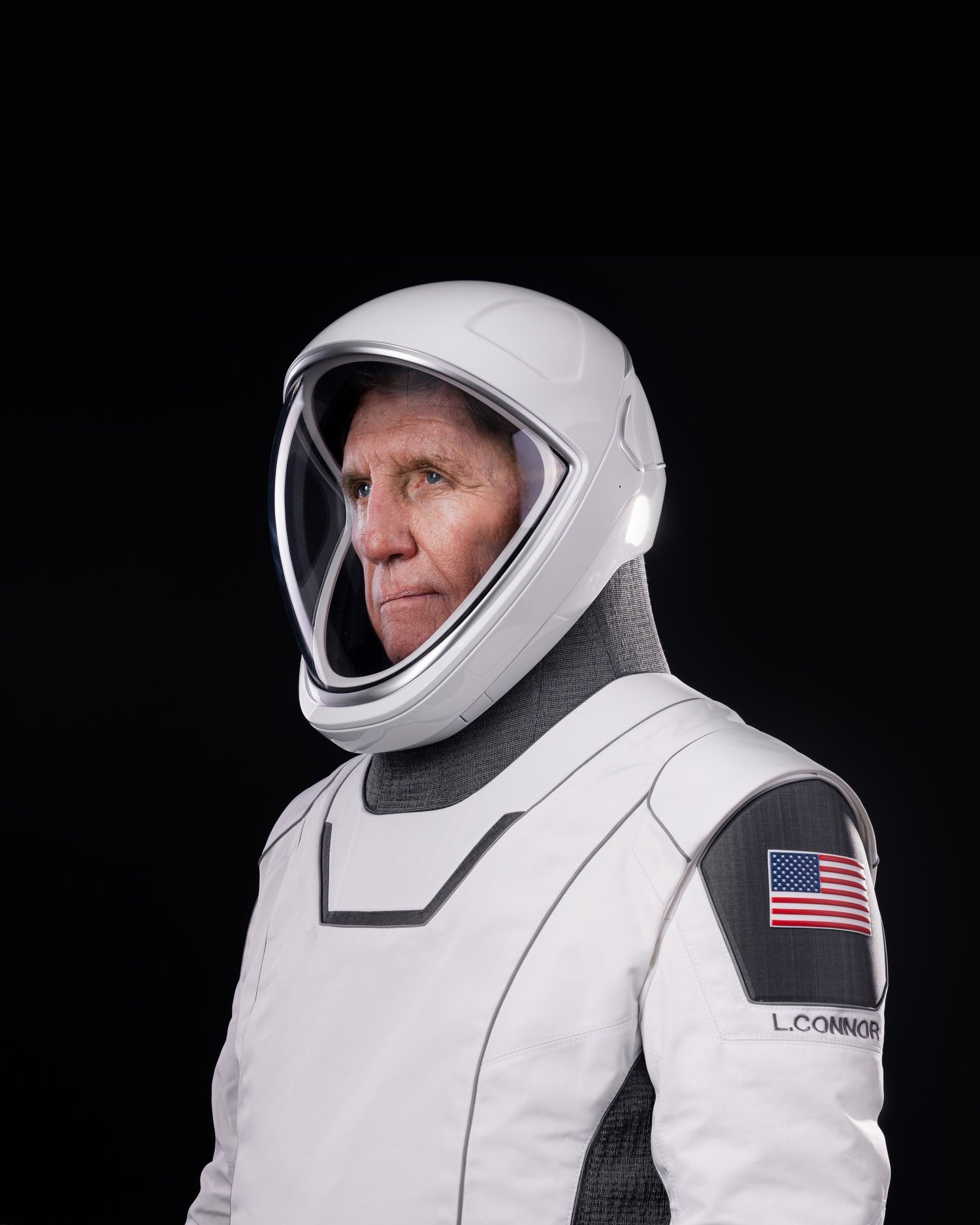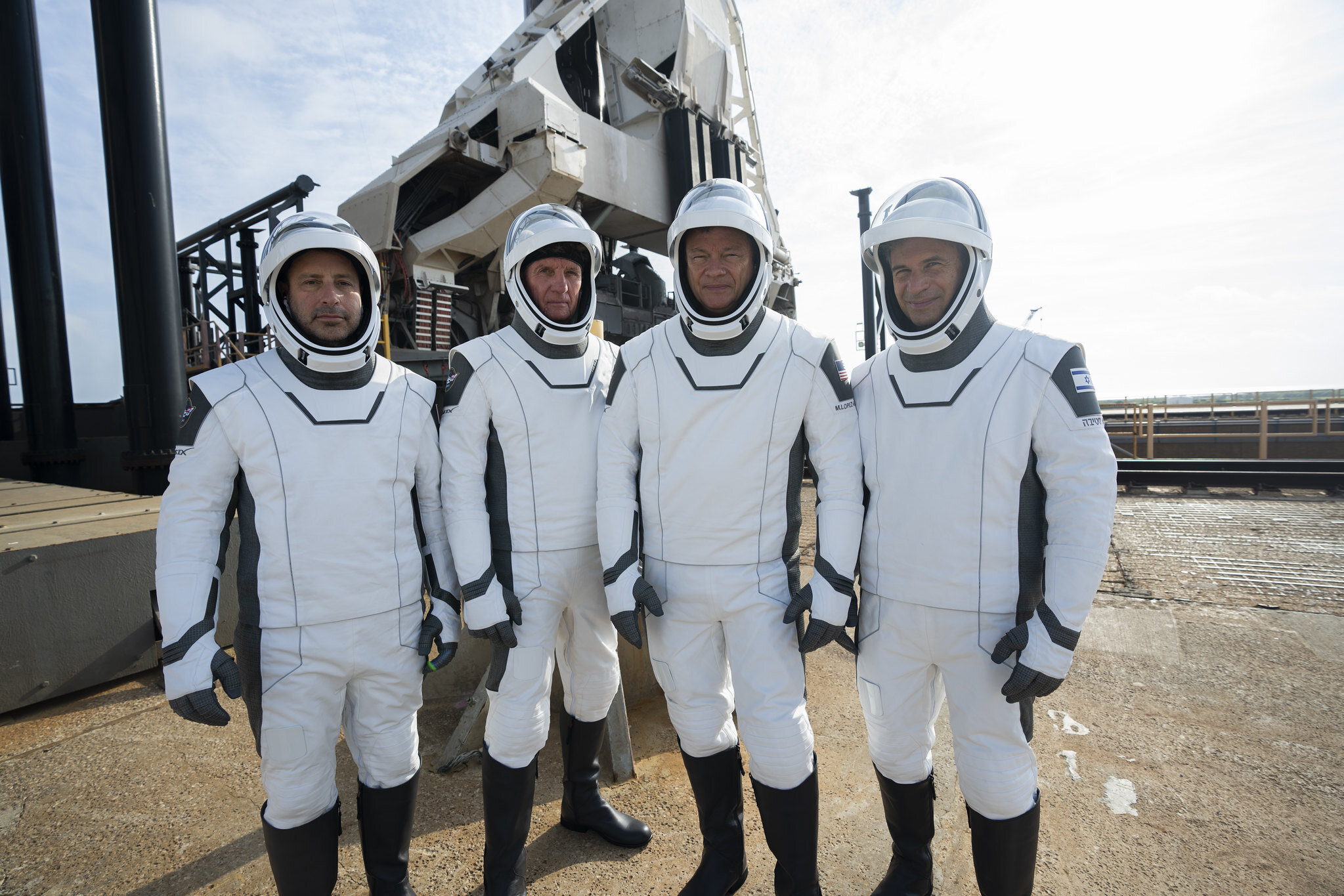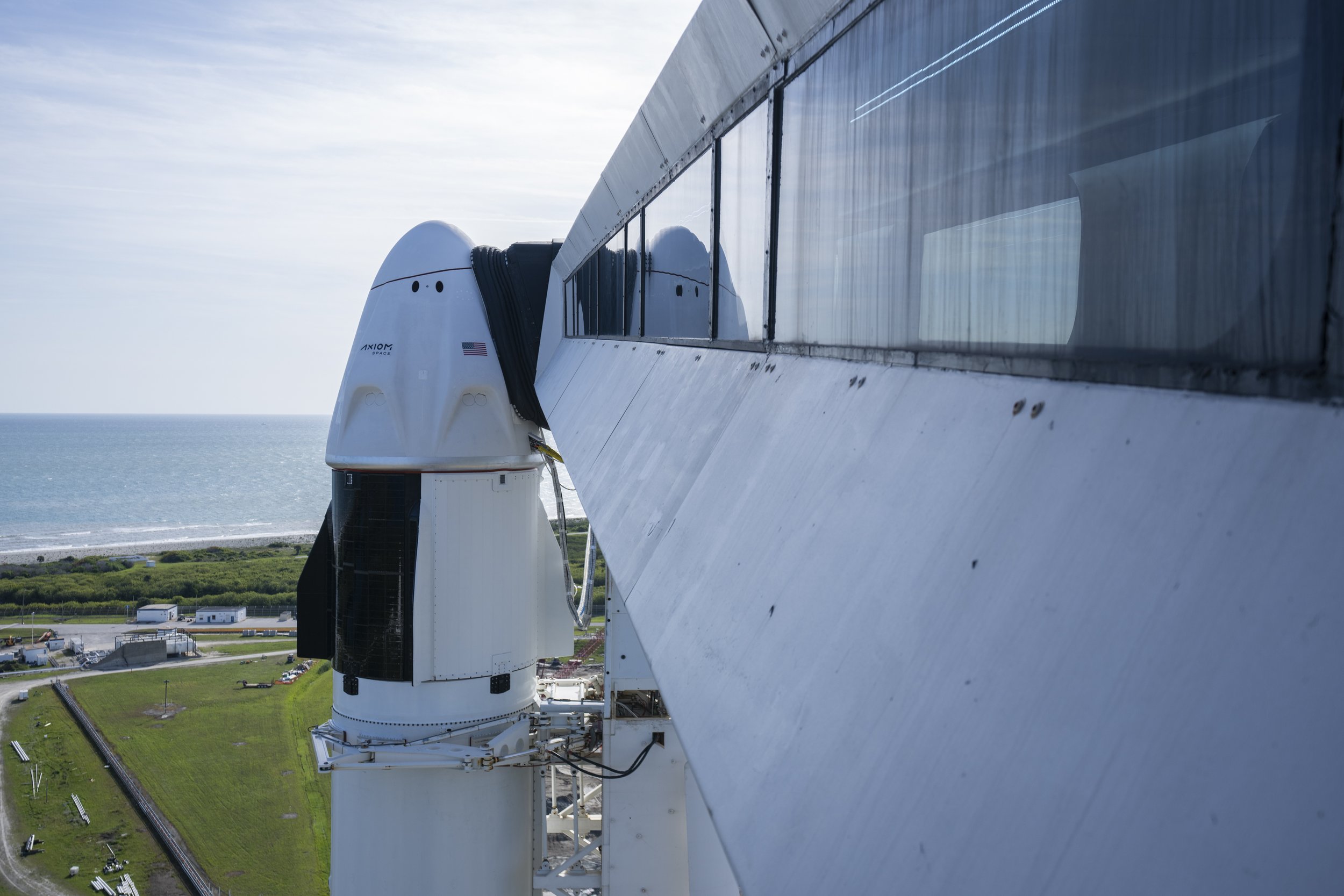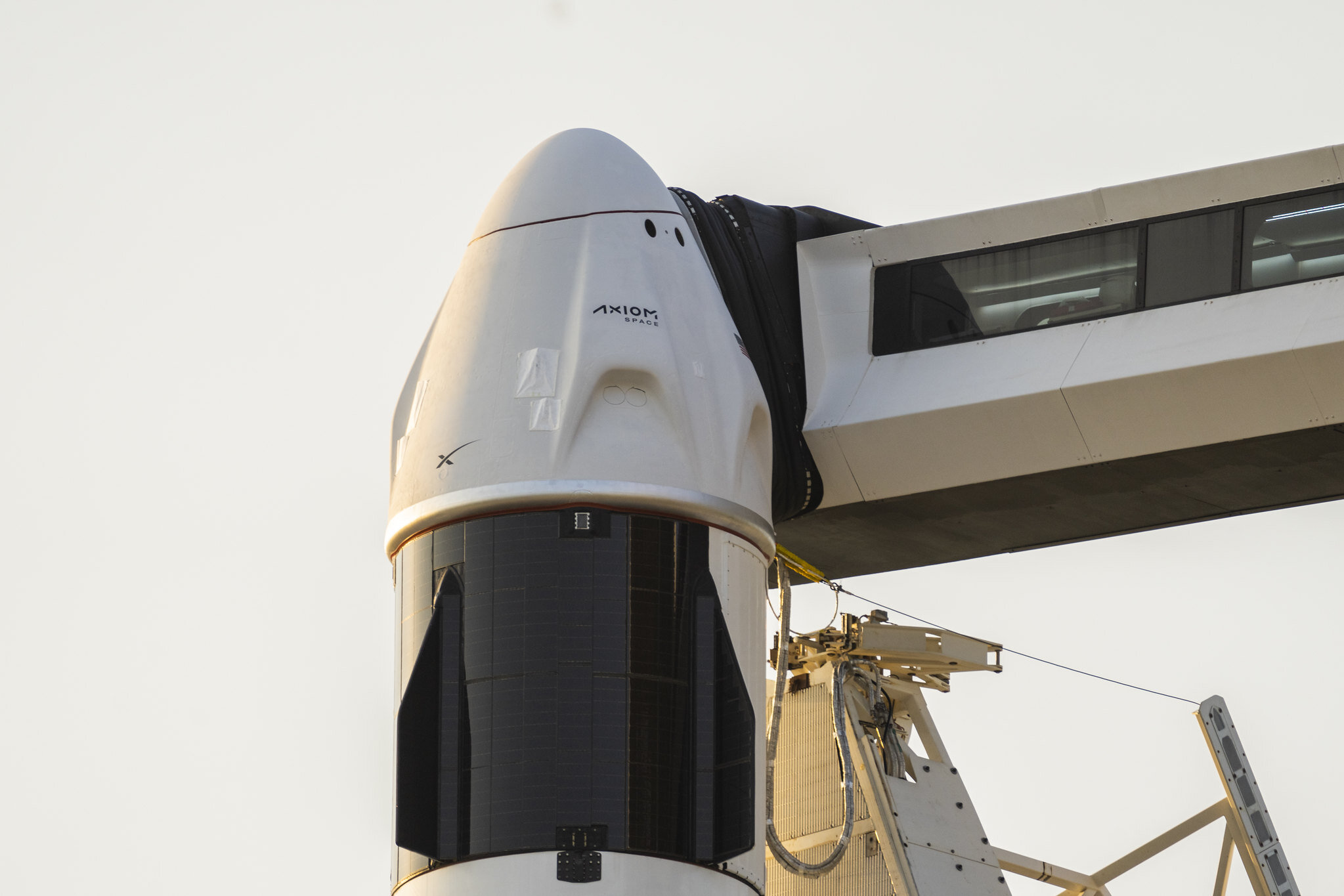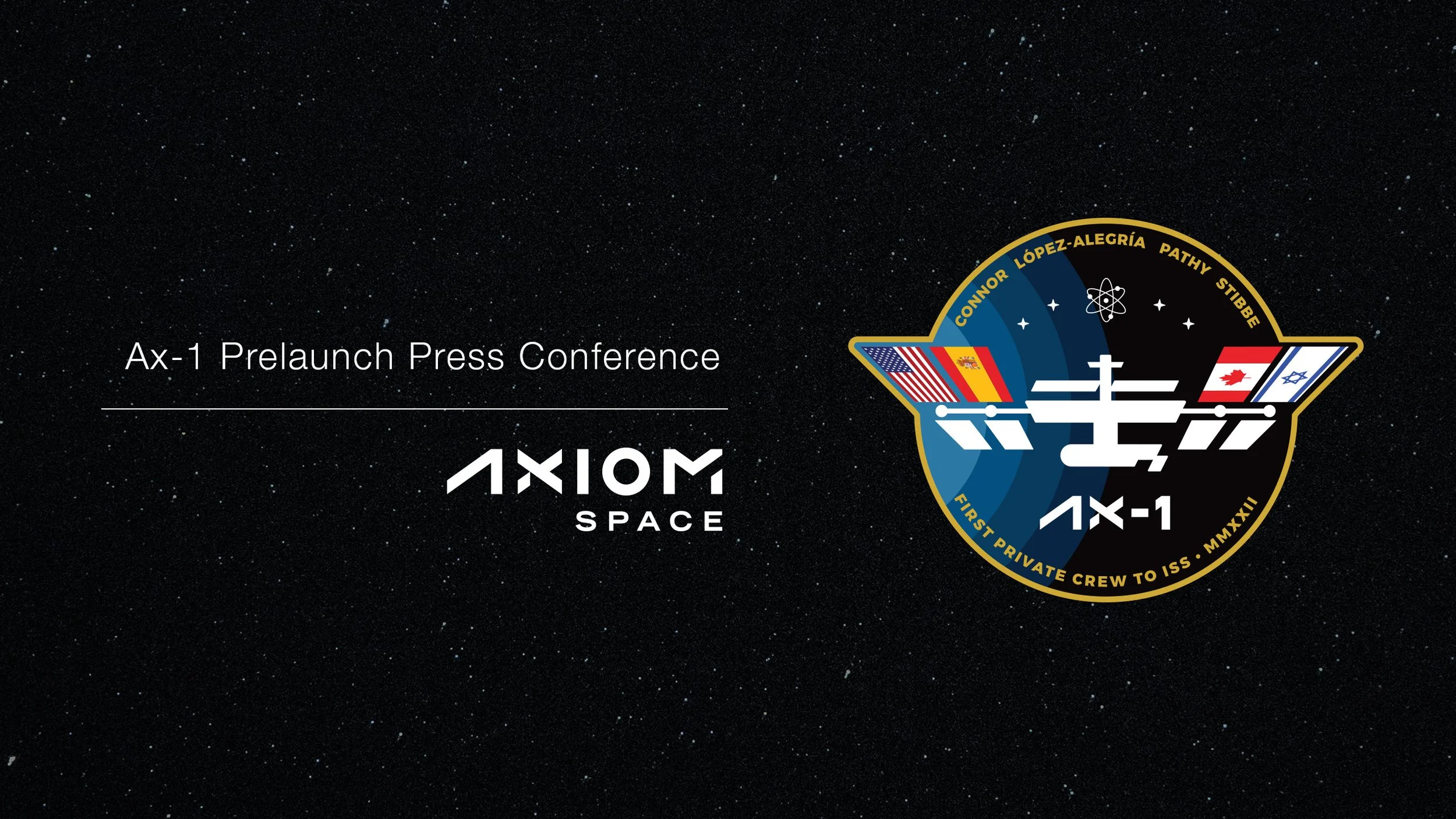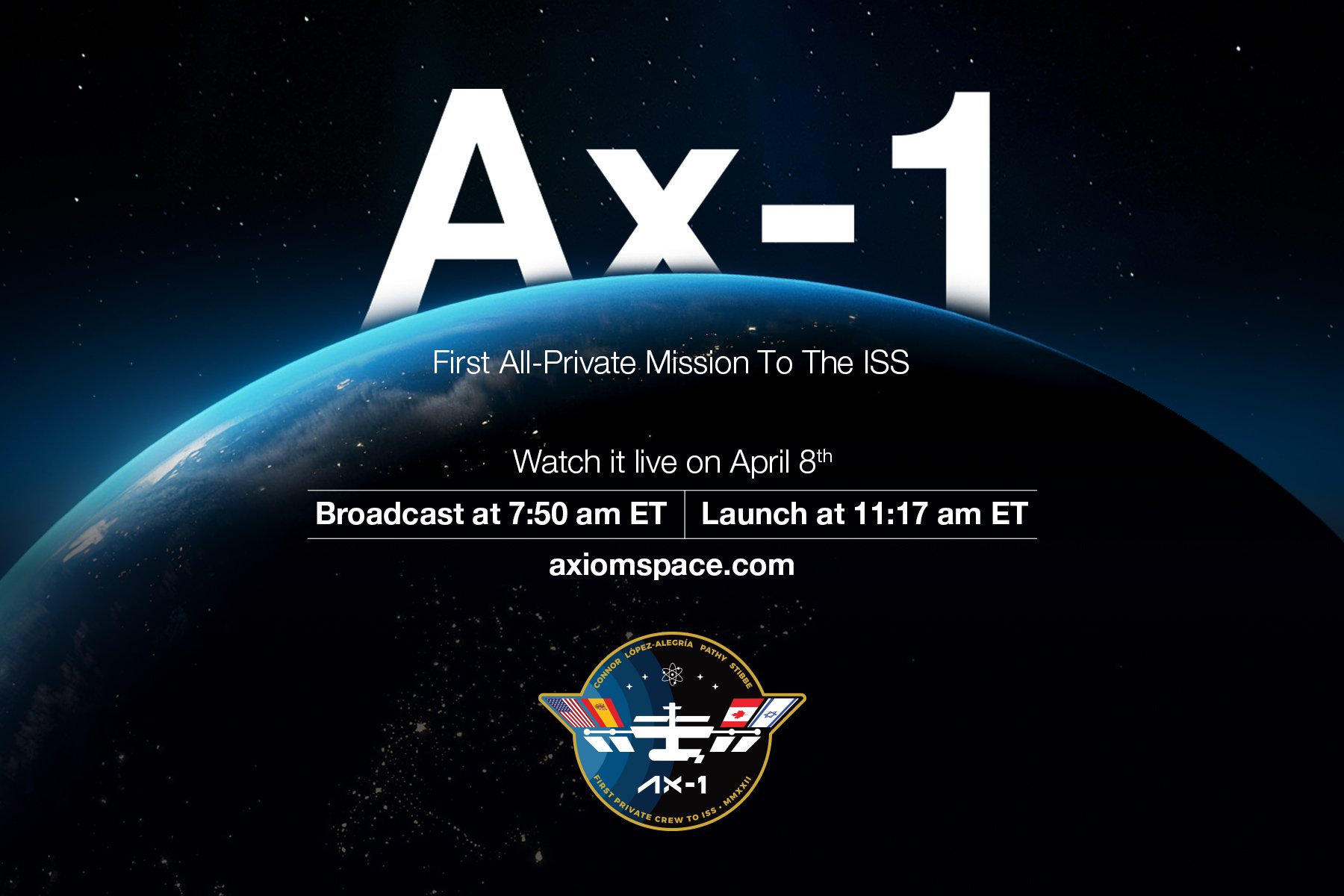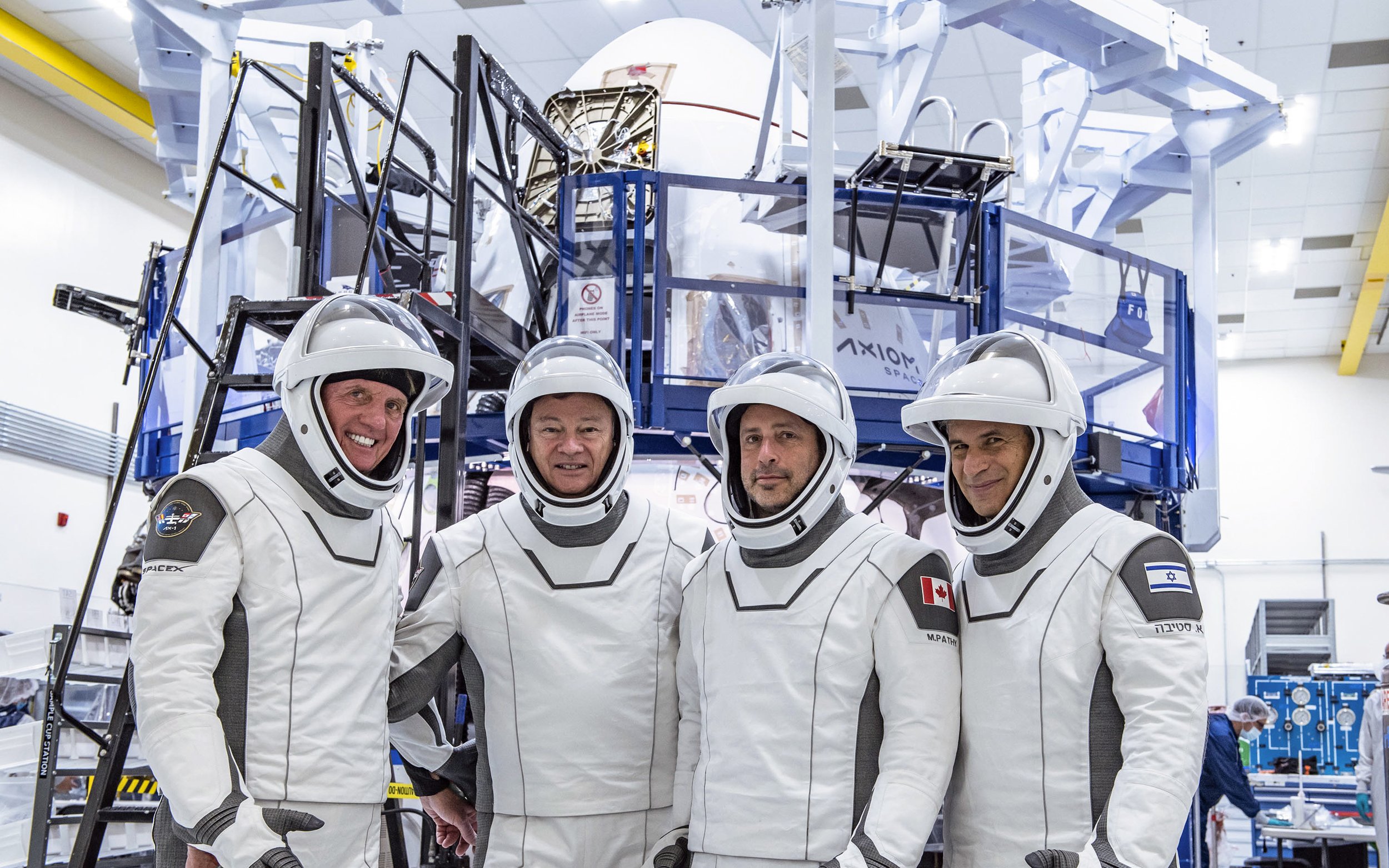EDITOR’S NOTE: Due to weather conditions, Ax-1 undock has been postponed to April 24. See updated media advisory for full details. (April 23, 2022)
EDITOR’S NOTE: Axiom Space is delaying the undocking of Ax-1 due to unfavorable weather conditions. TWEET (April 18, 2022)
EDITOR’S NOTE: This advisory has been updated to reflect changes to the Ax-1 schedule as of April 17, 2022.
HOUSTON, 14 April 2022 – Axiom Space has set coverage for the return of its historic Axiom Mission 1 (Ax-1), the first all-private astronaut mission to the International Space Station (ISS).
The SpaceX Dragon spacecraft carrying the four-person multinational crew is scheduled to undock from the International Space Station at approximately 10 p.m. EDT Tuesday, April 19, to begin the journey back to Earth.
Weather permitting, the spacecraft is anticipated to splashdown off the coast of Florida no earlier than approximately 3:24 p.m. EDT Wednesday, April 20.
Courtesy of NASA
Coverage of the Ax-1 return will include four separate segments over two days - farewell ceremony, hatch closure, undocking and splashdown. All segments will be available at AxiomSpace.com
Axiom Space and NASA will begin joint coverage on the morning of Tuesday, April 19, with a farewell ceremony between the Ax-1 and Expedition 67 crews. Joint coverage will include hatch closure which will air live on NASA Television, the agency’s website, and AxiomSpace.com
Axiom Space, NASA and SpaceX will produce joint coverage for undocking at 9:45 p.m.
Then on Wednesday, April 20, Axiom Space and SpaceX will begin joint webcast coverage through splashdown beginning at 2:20 p.m. EDT on AxiomSpace.com.
Ax-1 is the first of several proposed Axiom missions to the ISS and an important step toward Axiom Station, the world’s first private space station, which will serve as a hub in low-Earth orbit for research and exploration.
Ax-1 Commander Michael López-Alegría, Pilot Larry Connor, and Mission Specialists Eytan Stibbe and Mark Pathy will complete 12 days in space at the conclusion of their mission. SpaceX Dragon Endeavour, the Ax-1 spacecraft, will return to Earth with more than 200 pounds of science and supplies, including NASA experiments, hardware and commercial science payloads.
Coverage of the crew’s farewell from the ISS and return to Earth will be available as follows (all times Eastern):
Tuesday, April 19
7 a.m.: Ax-1 Crew Farewell Ceremony
The crew on board the International Space Station will participate in an end-of-mission, in-orbit event. Watch live at AxiomSpace.com and nasa.gov/live.
7:45 p.m.: Hatch Close
The hatch will close between the Dragon spacecraft and the International Space Station in preparation for undocking. Coverage begins 15 minutes ahead of hatch closure, scheduled for approximately 8 p.m. Watch live at AxiomSpace.com and nasa.gov/live.
9:45 p.m. : Undocking
The Ax-1 crew undocks from the ISS to begin the journey back to Earth. Coverage begins 15 minutes ahead of undocking, scheduled for approximately 10 p.m. Watch live at AxiomSpace.com, nasa.gov/live and SpaceX’s YouTube channel.
Wednesday, April 20
2:20 p.m.: Splashdown and Landing Broadcast
Coverage begins about an hour ahead of splashdown, scheduled for approximately 3:24 p.m. EDT. Watch live at AxiomSpace.com and SpaceX’s YouTube channel.
Time TBD: Post-landing Teleconference
Approximately one hour following the end of the webcast, Axiom Space and SpaceX leadership will provide remarks and take questions from reporters via teleconference.
Participants include:
Derek Hassman, Operations Director, Axiom Space
Benjamin Reed, Senior Director, Human Spaceflight Programs, SpaceX
To participate in the briefing, media must request call-in details no later than 8 a.m. Wednesday, April 20, by emailing media@axiomspace.com. This is a teleconference-only event (not in-person) with audio only.
This advisory will be updated as times are confirmed for events related to mission operations.
Follow along for mission updates with #Ax1 on Twitter, Instagram, Facebook, as well as our website.
About Axiom Space
Axiom Space is guided by the vision of a thriving home in space that benefits every human, everywhere. The leading provider of human spaceflight services and developer of human-rated space infrastructure, Axiom operates end-to-end missions to the International Space Station today while privately developing its successor – a permanent commercial destination in Earth’s orbit that will sustain human growth off the planet and bring untold benefits back home. More information about Axiom can be found at www.axiomspace.com.
For more information contact:
Bettina Inclán
media@axiomspace.com







